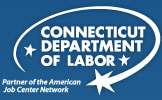| Go Back to List |
|
Set up, operate, or tend drilling machines to drill, bore, ream, mill, or countersink metal or plastic work pieces. |
|
|
|
| Technology used in this occupation: |
| |
Inventory management software |
 |
| |
Verify conformance of machined work to specifications, using measuring instruments, such as calipers, micrometers, or fixed or telescoping gauges. |
| |
Study machining instructions, job orders, or blueprints to determine dimensional or finish specifications, sequences of operations, setups, or tooling requirements. |
| |
Select and set cutting speeds, feed rates, depths of cuts, and cutting tools, according to machining instructions or knowledge of metal properties. |
| |
Install tools in spindles. |
| |
Change worn cutting tools, using wrenches. |
| |
Position and secure workpieces on tables, using bolts, jigs, clamps, shims, or other holding devices. |
| |
Move machine controls to lower tools to workpieces and to engage automatic feeds. |
| |
Turn valves and direct flow of coolants or cutting oil over cutting areas. |
| |
Operate single- or multiple-spindle drill presses to bore holes so that machining operations can be performed on metal or plastic workpieces. |
| |
Establish zero reference points on workpieces, such as at the intersections of two edges or over hole locations. |
| |
Operation Monitoring - Watching gauges, dials, or other indicators to make sure a machine is working properly. |
| |
Operation and Control - Controlling operations of equipment or systems. |
| |
Monitoring - Monitoring/Assessing performance of yourself, other individuals, or organizations to make improvements or take corrective action. |
| |
Reading Comprehension - Understanding written sentences and paragraphs in work related documents. |
| |
Active Listening - Giving full attention to what other people are saying, taking time to understand the points being made, asking questions as appropriate, and not interrupting at inappropriate times. |
| |
Speaking - Talking to others to convey information effectively. |
| |
Critical Thinking - Using logic and reasoning to identify the strengths and weaknesses of alternative solutions, conclusions or approaches to problems. |
| |
Complex Problem Solving - Identifying complex problems and reviewing related information to develop and evaluate options and implement solutions. |
| |
Social Perceptiveness - Being aware of others' reactions and understanding why they react as they do. |
| |
Troubleshooting - Determining causes of operating errors and deciding what to do about it. |
| |
Mechanical - Knowledge of machines and tools, including their designs, uses, repair, and maintenance. |
| |
Mathematics - Knowledge of arithmetic, algebra, geometry, calculus, statistics, and their applications. |
| |
Production and Processing - Knowledge of raw materials, production processes, quality control, costs, and other techniques for maximizing the effective manufacture and distribution of goods. |
| |
Design - Knowledge of design techniques, tools, and principles involved in production of precision technical plans, blueprints, drawings, and models. |
| |
Customer and Personal Service - Knowledge of principles and processes for providing customer and personal services. This includes customer needs assessment, meeting quality standards for services, and evaluation of customer satisfaction. |
| |
English Language - Knowledge of the structure and content of the English language including the meaning and spelling of words, rules of composition, and grammar. |
| |
Engineering and Technology - Knowledge of the practical application of engineering science and technology. This includes applying principles, techniques, procedures, and equipment to the design and production of various goods and services. |
| |
Computers and Electronics - Knowledge of circuit boards, processors, chips, electronic equipment, and computer hardware and software, including applications and programming. |
| |
Administration and Management - Knowledge of business and management principles involved in strategic planning, resource allocation, human resources modeling, leadership technique, production methods, and coordination of people and resources. |
| |
Education and Training - Knowledge of principles and methods for curriculum and training design, teaching and instruction for individuals and groups, and the measurement of training effects. |
 |
| |
(Please note that some searches may not produce any results.) |
|
|
|
|
| |
|
These occupations usually require a high school diploma.
|
| |
|
Some previous work-related skill, knowledge, or experience is usually needed. For example, a teller would benefit from experience working directly with the public.
|
|
|
|
 |
|
| Statewide |
$58,676.00 |
$28.21 |
$20.74 |
$22.76 - $32.48 |
|
 |
|
Printing Press Operators |
|
Sawing Machine Setters, Operators, and Tenders, Wood |
|
Cabinetmakers and Bench Carpenters |
|
Patternmakers, Wood |
|
Cutting, Punching, and Press Machine Setters, Operators, and Tenders, Metal and Plastic |
|
Lathe and Turning Machine Tool Setters, Operators, and Tenders, Metal and Plastic |
|
Milling and Planing Machine Setters, Operators, and Tenders, Metal and Plastic |
|
Machinists |
|
Model Makers, Metal and Plastic |
|
Patternmakers, Metal and Plastic |
 |
|



